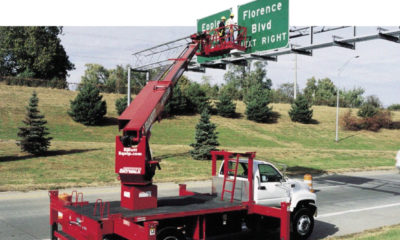UV, LATEX, GEL and sublimation printing seem to get all of the headlines in the sign industry. Does that mean one of those technologies is the way to go in 2024? The short answer is maybe. The longer answer depends upon a number of factors, primarily how much money you have to spend and if you need to print on non-traditional media like wood or fabric. Ultra-high speed can be another factor but that puts your company into a different category from small- to medium-sized shop. If you really just need something to print full-color banners, displays and vehicle graphics and the budget is tight, consider the OG of digital printing — eco-solvent.
Why does a technology that has been around for so long still appeal to many signshops? To begin, just look at the name — eco-solvent. The “eco” part refers to a type of ink using a pigment suspended in a very mild solvent that does not require special ventilation. You can even operate them in an office environment and they won’t run you out of the place due to fumes or odor. The “solvent” part allows the inks to adhere to many difficult media such as adhesive vinyl. Being a pigmented ink, its UV and outdoor durability are excellent when matched with a proper media. Its color vibrancy and image resolution explain its use as a vehicle wrap printing technology. In short, it just works for many situations. And the best part is eco-solvent printers don’t cost an arm and a leg.

Eco-solvent printing may not be the latest but continues to be a great option for laminated outdoor uses such as wraps.
Let’s talk about price. You can get a small format printer in a 20- to 24-in. width that’s good for short run labels and small signs. That will set you back about $5K to $7K. Moving up to a 24-in. width and you’re looking at around $6.5K. Don’t expect high speeds but you can definitely get your foot in the door. If you really want a production unit then you are looking at around $12K for a 30-in. machine. And top of the line? You’re looking at about $40K to $50K for a 127-in. printer that can hit speeds of 1,475 sq. ft./hr.
A good production eco-solvent printer will run you around $16K to $20K. You will get a 54- to 64-in. width that is great for vehicle wraps and banners. In some cases you can get a printer with integrated vinyl-cutting capabilities. Print speeds will be around 300 sq. ft./hr. You can get extended-gamut inks if print quality holds the most importance and even find eco-solvent printers that can handle white inks for printing on non-white media. This class of machine can be a real workhorse in a shop.
So what are the disadvantages of eco-solvent printers? Waste ink disposal can be a problem when compared to other technologies, especially if your area has an environmental concern. Eco-solvent inks need time and heat to dry. Roll-to-roll applications can slow down printing as images must dry before wrapping onto the takeup roll. Some argue that the ink isn’t as durable as UV or latex but applications like vehicle wraps generally require lamination, which negates this issue.
All in all, eco-solvent printers are a great solution if you need to primarily print on flexible media. The image quality is outstanding and the buy-in cost is friendly on the pocketbook. If you are looking at adding to an existing shop or expanding into full-color digital printing, take a look at the eco-solvent printers on the market today.
PHOTO GALLERY (6 IMAGES)
Advertisement


 News6 days ago
News6 days ago
 Projects2 weeks ago
Projects2 weeks ago
 Real Deal7 days ago
Real Deal7 days ago
 How To2 weeks ago
How To2 weeks ago
 Photo Gallery4 days ago
Photo Gallery4 days ago
 Editor's Note1 week ago
Editor's Note1 week ago
 Tip Sheet5 days ago
Tip Sheet5 days ago
 News2 weeks ago
News2 weeks ago
























